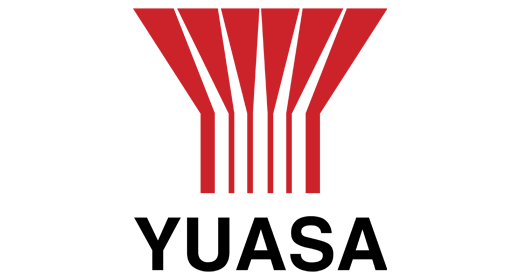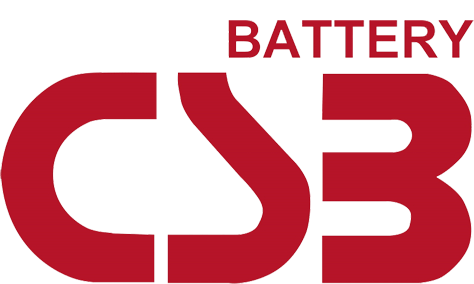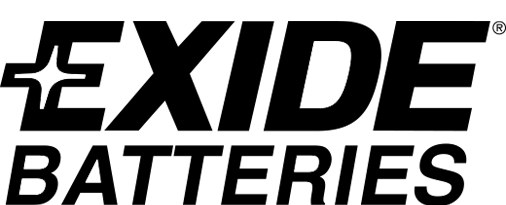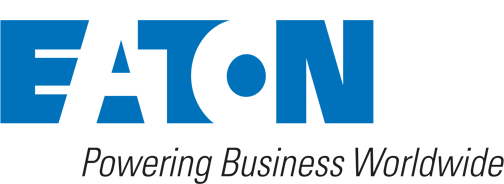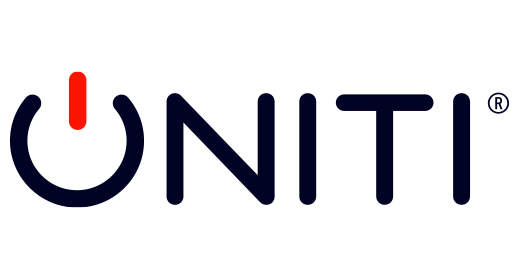Line-Interactive UPS Explained: Cost-Effective Protection for Businesses
In today’s fast-paced digital world, a reliable power supply is essential for keeping businesses running, protecting sensitive equipment, and ensuring the smooth delivery of everyday services. When the power goes out or voltage fluctuates, the risks range from costly downtime to damaged hardware. That is why Secure Power works with organisations across the UK to deliver dependable Uninterruptible Power Supply (UPS) solutions tailored to each environment.
This is where Line-Interactive UPS systems step in, offering a smart balance of performance, efficiency, and affordability. They have become a go-to choice for organisations of all sizes – from small businesses and home offices to healthcare environments – thanks to their ability to regulate power and provide instant battery backup when it matters most.
A great example is the new Uniti Power Tempo range, launched in September 2025. Designed for compact, efficient protection, Tempo line-interactive UPS units deliver Automatic Voltage Regulation (AVR), multiple capacity options, and extended runtimes – making them ideal for safeguarding workstations, retail counters, small servers, and essential IT equipment.
In this article, we’ll explore what makes line-interactive UPS systems so valuable, how they work, and the benefits they bring. Whether you’re an IT professional or simply want reliable protection for your equipment, these insights will help you choose the right UPS for your needs.
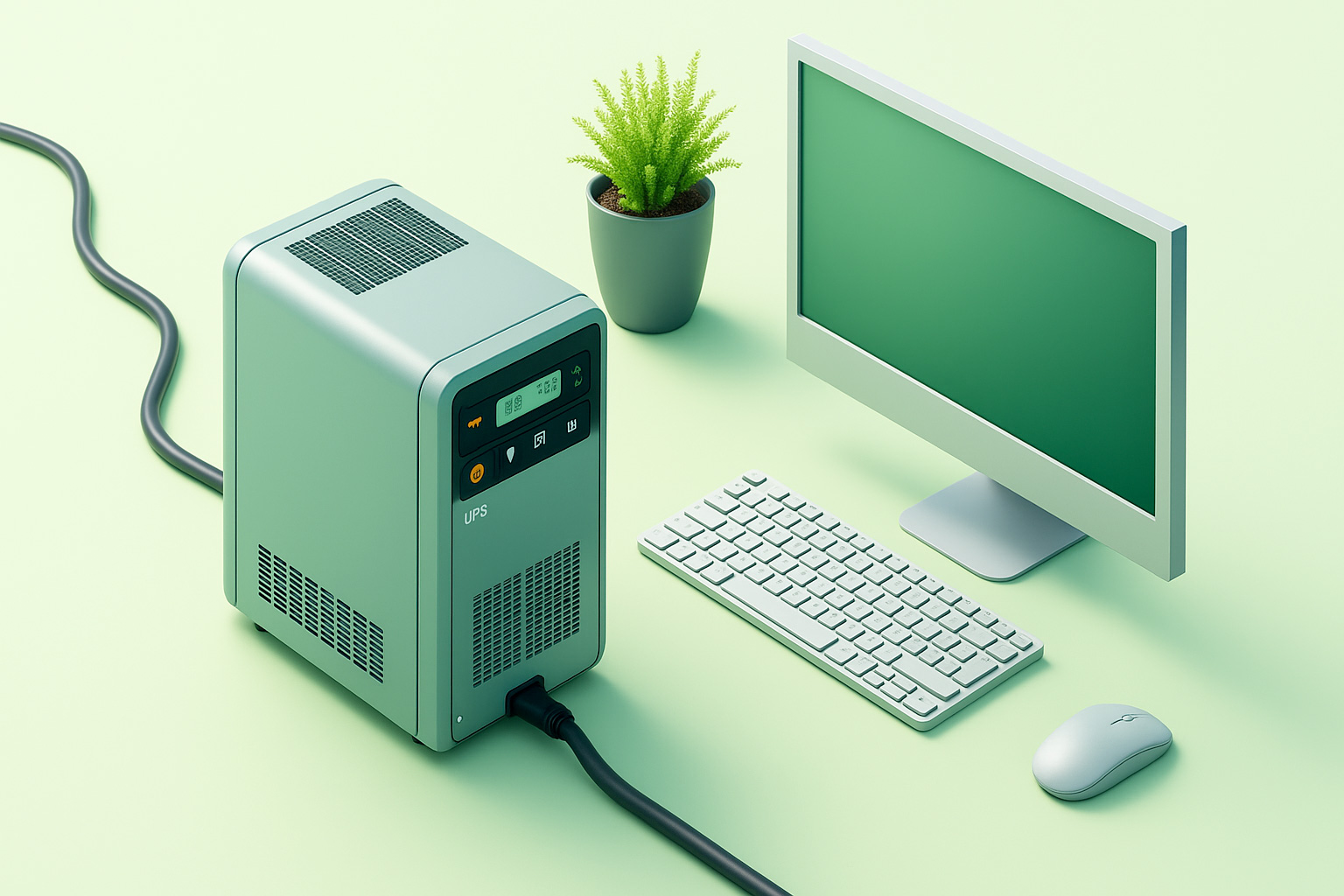
Understanding Uninterruptible Power Supply (UPS) Systems
Electricity is the backbone of virtually every industry. However, power interruptions can lead to data loss, equipment damage, and significant downtime. This is where Uninterruptible Power Supply (UPS) systems come in.
A UPS is essentially a backup power system designed to provide power for a short period when the main source of electricity fails. It acts as an emergency battery that kicks in instantly, ensuring that we experience no gap in power supply. This continuity is crucial for sensitive electronic equipment, particularly in sectors such as IT, healthcare, and telecommunications.
UPS systems not only keep our devices powered but also stabilise voltage fluctuations, protecting them from surges and outages. By maintaining a continuous supply of electricity, we can ensure maximum productivity and minimise risks related to power interruptions.
An uninterruptible power supply is not just a backup; it’s a guarantee of uninterrupted performance.
Types of UPS Systems
When exploring UPS systems, we discover several types, each tailored to meet varying needs and operational contexts. Understanding these types can help us choose the right one for our specific applications.
- Offline/Standby UPS
This is the most basic type of UPS system, perfect for home offices or personal computers. It remains idle until a power outage occurs. Once an outage is detected, it switches to battery power in a matter of milliseconds, providing enough time for a safe shutdown of connected devices.
- Line-Interactive UPS
Ideal for environments with frequent power fluctuations, the line-interactive UPS maintains battery health by regulating voltage levels. It can adapt to minor voltage variations without switching to battery power, which enhances its lifespan and efficiency.
- Online UPS
For critical systems requiring constant and consistent power, online UPS is the go-to choice. This system continuously converts incoming AC power to DC, then back to AC, providing a clean, stable power supply. This is particularly vital in data centres or industries where power quality is crucial.
|
Type of UPS |
Best For |
Key Feature |
|
Offline/Standby |
Home use, personal computers |
Inactive until power failure |
|
Line-Interactive |
Small to medium setups |
Voltage regulation with minimal downtime |
|
Online |
Data centres, critical equipment |
Continuous power conditioning |
Selecting the right UPS system hinges on our specific needs, budget, and the importance of maintaining a constant power supply. By understanding the differences among these systems, we can make informed decisions that protect our valuable resources and keep our operations running smoothly.
What is Line-Interactive UPS?
Ensuring a steady and reliable power supply is more crucial than ever. With the rising dependence on technology and the increasing frequency of power interruptions, the need for an uninterruptible power supply (UPS) system is becoming a necessity rather than a luxury. Among the various types of UPS systems available, the line-interactive UPS stands out as a popular and efficient option. Let’s explore this technology together, delving into its working principles and key features that make it an ideal choice for many applications.
Working Principle
The line-interactive UPS operates on a straightforward yet effective mechanism. It actively manages power fluctuations, providing clear advantages over other UPS types. Here’s how it functions:
- Voltage Regulation: The line-interactive UPS includes an automatic voltage regulator (AVR) that adjusts the incoming voltage. This function allows it to stabilise the output power without switching to battery, thus saving battery life while ensuring consistent power delivery.
- Double-Conversion Design: In essence, the line-interactive UPS constantly monitors the incoming power. When a brownout or overvoltage occurs, the UPS uses its stored energy to maintain power to the connected devices. This swift action enables minimal disruption.
- Bypass Feature: Another important aspect of the line-interactive design is its ability to revert to utility power during normal conditions. This feature not only prolongs the battery life but also reduces wear and tear on internal components.
Key Features
When we consider investing in a line-interactive UPS, various features make it a standout choice. Here are some of the main advantages:
- Cost-Effective Solution: Compared to online UPS systems, line-interactive models are generally more affordable while still providing ample protection against voltage irregularities.
- Efficient Power Usage: Because they reduce reliance on battery power for minor fluctuations, these UPS units are energy-efficient, translating to lower electricity costs.
- User-Friendly Interface: Many line-interactive UPS systems come equipped with intuitive displays that communicate essential information such as battery status, input/output voltage, and load capacity.
- Expandable Capacity: Various models allow for additional batteries, enabling us to scale up according to our power needs without a complete system overhaul.
By employing a line-interactive UPS, we can confidently safeguard our electronic devices from various power-related issues. Its innovative design, combined with beneficial features, meets the needs of both home and business environments effectively. Whether for protecting sensitive network devices or ensuring smooth operation during brief outages, line-interactive systems provide a reliable solution tailored to our power protection needs.
The Benefits of Line-Interactive UPS Systems
In today's world, where power interruptions can mean lost data and decreased productivity, having a reliable uninterruptible power supply (UPS) system is essential for both businesses and home offices. Among the various types of UPS systems available, line-interactive UPS systems stand out due to their unique advantages. Together, let’s explore the key benefits of these remarkable systems.
Cost-Effectiveness
One of the most compelling reasons for choosing a line-interactive UPS system is its cost-effectiveness.
- Affordable Initial Investment: Compared to online UPS systems, line-interactive models typically have a lower upfront cost, making them accessible to a wider range of users.
- Long-term Savings: Their design allows them to efficiently manage power conditions, reducing wear on connected devices and prolonging their lifespan, ultimately saving money on replacements and repairs.
By opting for a line-interactive UPS, we can balance our immediate financial needs with long-term value.
Energy Efficiency
In our increasingly energy-conscious society, energy efficiency has become a top priority.
- Reduced Energy Consumption: Line-interactive UPS systems utilise a more efficient use of power during normal operations. They experience less energy loss, which translates into lower electricity bills.
- Eco-Friendly Operation: The design often includes energy-saving features, allowing us to reduce our carbon footprint. This not only helps the environment but also aligns with sustainability goals that many organisations embrace today.
As we consider energy choices, integrating line-interactive systems can be a smart and responsible decision.
Voltage Regulation
Maintaining the right voltage levels is crucial for protecting sensitive electronics.
- Automatic Voltage Regulation (AVR): Line-interactive UPS systems come equipped with AVR capabilities that automatically adjust to voltage fluctuations, ensuring a consistent power supply.
- Protection Against Surges and Brownouts: By managing sags or spikes in power, these systems provide an additional layer of protection to our devices, minimising the risk of damage and downtime.
This advanced voltage regulation feature helps us sleep easier at night, knowing our devices are safeguarded from unpredictable power issues.
User-Friendly Design
When it comes to technology, user-friendliness can make all the difference in how effectively we manage our systems.
- Simple Installation and Setup: Line-interactive UPS units are typically straightforward to install and configure, reducing the hassle associated with setting up complex systems.
- Intuitive Interfaces: Many models offer clear, user-friendly displays with status indicators, making it easy for us to monitor the system's health at a glance.
This emphasis on usability allows us to focus on our important work rather than worrying about managing our power systems.
By understanding the advantages of line-interactive UPS systems, we can make informed decisions that align with our needs for cost, efficiency, reliability, and ease of use. With their blend of economic viability and robust functionality, these systems truly represent a smart investment in power management solutions. As we look to safeguard our operations against power failures, line-interactive UPS systems emerge as an excellent choice for both personal and professional settings.
Applications of Line-Interactive UPS Systems in the UK
Ensuring a reliable power supply is crucial across various sectors. Line-interactive Uninterruptible Power Supply (UPS) systems play a pivotal role in safeguarding sensitive equipment and maintaining operational continuity. Let's explore the diverse applications of these systems and understand how they're shaping the operational resilience of businesses and facilities.
Small and Medium-Sized Enterprises (SMEs)
For many SMEs, power disruptions can mean significant losses, both financially and reputationally. Line-interactive UPS systems offer an effective solution, enhancing power quality while simultaneously providing battery backup during outages. Here's why SMEs should consider these systems:
- Cost-Effective: They are generally more affordable than other UPS types, making them a sensible choice for budget-conscious SMEs.
- Reliable Power Quality: These systems can correct minor power fluctuations and surges, ensuring that sensitive equipment runs smoothly.
- Scalability: As a growing business, the capacity of line-interactive UPS systems can often be easily expanded to match increasing demands.
Implementing line-interactive UPS systems allows SMEs to maintain productivity and build trust among their customers, knowing that they are less likely to experience operational downtime due to power failures.
Home Office Use
The surge in home working arrangements has further highlighted the importance of reliable power sources. For those of us working from home, a line-interactive UPS system can be a game-changer. Here’s how they enhance our home office experience:
- Continuous Workflow: During power outages, these systems kick in automatically, allowing us to save our work and shut down devices safely.
- Protection Against Surges: They provide essential surge protection for our desktops, laptops, and other electronic devices, extending their lifespan.
- Ease of Use: With easy installation and user-friendly interfaces, they require minimal technical knowledge and can be integrated seamlessly into existing setups.
By investing in a line-interactive UPS, we can create a reliable home office environment, enabling us to focus on our tasks without the fear of power interruptions.
Healthcare Facilities
In healthcare, interruptions in power supply can have critical consequences. Line-interactive UPS systems assist healthcare facilities in maintaining essential operations. Here’s what makes them indispensable in this sector:
- Life-Saving Continuity: They ensure that medical equipment, such as ventilators and monitors, continues functioning during power outages, directly impacting patient safety.
- Operational Efficiency: By protecting sensitive data and medical devices from power spikes, healthcare providers can ensure that their systems remain operational and data stays secure.
- Compliance and Risk Management: Many healthcare regulations require uninterrupted service; line-interactive UPS systems help facilities comply with these regulations.
The investment in these systems is a critical aspect of healthcare infrastructure that not only promotes patient trust but also contributes to better health outcomes.
IT Infrastructure Protection
In today's digital age, protecting IT infrastructure is paramount. Line-interactive UPS systems serve as a backbone for IT departments, guarding against the risks associated with power interruptions. The advantages we see include:
- Data Integrity: These systems prevent data loss by providing the necessary time to save work and perform orderly shutdowns during outages.
- System Longevity: By filtering out poor power quality, we help preserve the health and performance of our servers and networking equipment.
- Adaptability: Whether we’re in a small office or a large corporate environment, these systems can often be tailored to fit diverse infrastructures.
Utilising line-interactive UPS systems in our IT environments is essential for maintaining seamless operations and safeguarding critical data.
As we’ve explored, line-interactive UPS systems hold paramount significance across various sectors in the UK, from SMEs to healthcare facilities and IT infrastructures. With their capability to ensure power quality and backup, these systems foster resilience and confidence in our operations, helping us thrive amidst an unpredictable power landscape.
Spotlight on the Uniti Power Tempo Range
Following on from the wide-ranging benefits and applications of line-interactive UPS systems, it makes sense to highlight a solution that ticks all the right boxes for UK businesses and home users alike, the Uniti Power Tempo range.
Designed with performance, efficiency, and ease of use in mind, Tempo UPS systems deliver everything we have discussed so far in a sleek, dependable package. Whether you are safeguarding critical IT equipment in an SME, ensuring continuity in a healthcare environment, or keeping your home office powered during outages, the Tempo range offers exceptional value.
Key Features of the Uniti Power Tempo Range
- Line-Interactive Technology: The Tempo range uses advanced automatic voltage regulation to protect against surges, sags, and brownouts without unnecessarily draining the battery.
- Versatile Form Factor: Available in both tower and rack-mount configurations, Tempo units can adapt to any workspace, whether in a comms cabinet, server room, or tucked neatly under a desk.
- LCD Status Display: Easy-to-read screens show input/output voltage, load capacity, and battery runtime at a glance, so we can monitor performance without guesswork.
- USB and Network Connectivity: Seamless integration with monitoring software ensures we can manage power conditions and receive alerts in real time.
- Outstanding 6-Year Warranty: Every Tempo model is backed by an industry-leading 6-year warranty, giving total peace of mind and reinforcing the confidence Uniti Power has in its build quality.
- Compact, Modern Design: A streamlined look combined with robust build quality makes Tempo units ideal for both business and customer-facing environments.
Why Choose Tempo for Your Power Protection
The Uniti Power Tempo range is more than just a UPS. It is a long-term investment in reliability, backed by a 6-year warranty that goes far beyond the industry norm. With competitive pricing, flexible sizing options, and excellent aftersales support, Tempo delivers a strong return on investment.
To explore the full Tempo lineup and find the perfect model for your needs, visit the Uniti Power Systems page or download the latest Tempo Range Brochure.
Comparison with Other UPS Types
When it comes to uninterruptible power supplies (UPS), understanding the differences between various types can significantly influence our choice of reliable backup power solutions. Here we compare Line-Interactive UPS systems with both Offline and Online options to help identify the best fit for different scenarios.
Line-Interactive vs. Offline UPS
Line-Interactive UPS systems provide enhanced protection against power fluctuations by using an automatic voltage regulator (AVR). This allows them to boost or reduce voltage without switching to battery mode, extending battery life and improving efficiency. They are particularly suited to environments where power quality varies but full outages are infrequent.
Key Advantages of Line-Interactive over Offline UPS:
- Voltage Regulation: AVR ensures steady voltage delivery and reduces battery usage.
- Cost-Effectiveness: More affordable than Online UPS while still offering strong protection.
- Better for Sensitive Equipment: Suitable for computers and devices that benefit from voltage stabilisation.
Offline UPS systems, also known as standby UPS, operate on a simpler principle. They switch to battery power only when a power loss is detected.
Key Points for Offline UPS:
- Simplicity: Basic design makes them easy to use and budget-friendly.
- Best for Less Critical Devices: Ideal for equipment that can handle short interruptions, like printers or basic PCs.
- No Voltage Regulation: Leaves devices more exposed to power fluctuations.
If voltage stability is important, a Line-Interactive model is the smarter choice. For less sensitive equipment and lower budgets, Offline systems can be sufficient.
Line-Interactive vs. Online UPS
Online UPS systems take protection to the highest level by constantly converting incoming AC power to DC and back to AC, delivering a clean, uninterrupted supply. This makes them indispensable in critical environments such as data centres and hospitals.
Key Advantages of Online UPS:
- Continuous Power Supply: Zero transfer time during an outage, essential for mission-critical systems.
- Maximum Protection: Defends against surges, sags, frequency variations, and more.
- Ideal for Critical Applications: Ensures the highest possible uptime and stability.
While Online UPS offers the ultimate in protection, Line-Interactive UPS systems still provide a strong level of defence at a lower cost. They maintain voltage stability without excessive battery use and are well suited for environments where power reliability is important, but the highest level of conditioning is not essential.
Why Choose Line-Interactive Over Online:
- Balanced Protection: Meets the needs of most SMEs, home offices, and IT setups.
- Lower Cost: Less expensive to purchase and operate.
- Energy Efficient: Uses battery only when necessary.
By comparing these UPS types, we can match the right technology to our needs. For absolute uptime and sensitive systems, Online UPS remains the top choice. For most everyday business and home office environments, Line-Interactive offers the ideal balance between protection, cost, and efficiency.
Best Practices for Implementing Line-Interactive UPS Systems
Implementing line-interactive UPS (Uninterruptible Power Supply) systems can significantly improve the reliability of our backup power solutions, keeping critical systems operational during outages. The choices we make at the outset will determine how effective our power management strategy will be in the long term. Here are some best practices to ensure smooth and effective deployment.
Choosing the Right Capacity
Selecting the correct capacity is essential for optimal UPS performance. Both underestimating and overestimating can lead to inefficiency or potential failure.
- Assess Power Requirements: Calculate the total wattage of all devices to be connected, including servers, networking equipment, and any other essential systems.
- Consider Expansion: Choose a UPS with headroom for future growth to avoid costly upgrades later.
- Evaluate Runtime Needs: Determine how long backup power is required during outages to ensure the UPS meets operational requirements.
Regular Maintenance and Testing
Ongoing maintenance is key to long-term performance and reliability.
- Scheduled Inspections: Establish a maintenance schedule covering visual checks and testing of batteries, circuits, and cooling systems.
- Battery Tests: Perform regular battery tests, ideally once a year, to confirm performance and remaining lifespan.
- Software Updates: Keep firmware and UPS management software current to benefit from efficiency improvements, new features, and security patches.
User Training
Even the best UPS system is only as effective as the people operating it.
- Familiarisation with Equipment: Train relevant staff on how the UPS operates and how to respond in the event of a power outage.
- Simulation Drills: Conduct regular power outage drills to ensure staff can react quickly and confidently.
- Documentation Access: Make sure user manuals and troubleshooting guides are easily accessible to all relevant team members.
By following these best practices, we can maximise the reliability and efficiency of our line-interactive UPS systems. This proactive approach ensures we are always ready to maintain operations when power interruptions strike.
Cost Considerations for Line-Interactive UPS
When it comes to safeguarding our electronic equipment, investing in a line-interactive Uninterruptible Power Supply (UPS) is a smart choice. Understanding the initial investment, long-term savings, and return on investment (ROI) can help us make decisions that balance budget control with operational resilience.
Initial Investment
The upfront cost of a line-interactive UPS varies based on capacity, features, and brand.
- Capacity Needs: Higher-capacity UPS units command a higher price but can support more critical devices.
- Additional Features: LCD displays, USB connectivity, and network management capabilities can influence the cost.
- Brand Comparison: Choosing reputable brands with strong warranties can be more economical in the long run, even if the initial price is higher.
While the initial spend can feel significant, it is a necessary investment to protect our technology and maintain business continuity.
Long-term Savings
The financial benefits extend far beyond the initial purchase.
- Reduced Downtime: Minimising the impact of outages can lead to increased productivity and revenue retention.
- Equipment Longevity: Protection against surges and fluctuations extends the life of devices, reducing replacement costs.
- Lower Insurance Premiums: Some insurers reward businesses that use protective power equipment with reduced premiums.
Over time, these benefits can offset the initial expense and strengthen operational efficiency.
Return on Investment (ROI)
Calculating ROI allows us to see the tangible value of our UPS investment.
- Cost of Downtime: Estimating potential losses during outages can highlight how much the UPS saves in avoided disruptions.
- Energy Efficiency: Many line-interactive models use less power, lowering electricity costs.
- Equipment Protection: Avoiding repair or replacement costs adds further financial value.
When viewed over the system’s lifespan, the savings and protection provided by a line-interactive UPS often far outweigh the purchase price, making it a financially sound decision.
Conclusion
Line-interactive UPS systems remain one of the most balanced and versatile power protection solutions on the market. They combine dependable performance, impressive energy efficiency, and cost-effectiveness, making them ideal for everything from home offices to busy SME environments and even demanding healthcare facilities. With the ability to regulate voltage without unnecessary battery drain, plus simple installation and operation, they deliver robust protection without overcomplicating your setup.
By understanding their benefits, applications, and best practices for deployment, we can make confident, informed decisions that protect our technology, strengthen operational resilience, and deliver a measurable return on investment. Whether the goal is to prevent data loss, safeguard critical equipment, or maintain productivity during an outage, a well-chosen line-interactive UPS is an indispensable part of a strong power management plan.
For organisations seeking expert advice and reliable products, Secure Power delivers tailored UPS solutions to suit every environment. From supplying cutting-edge technologies to providing professional installation, preventative maintenance, and ongoing support, we focus on ensuring your business operates without interruption. Our Uniti Power Tempo range sets the benchmark for line-interactive UPS systems, combining advanced voltage regulation, flexible form factors, intuitive monitoring, and an industry-leading 6-year warranty for complete peace of mind and long-term value.
Discover how Secure Power and the Uniti Power Tempo range can protect your business today, because when the power goes out, we make sure your operations stay on.
Frequently Asked Questions (FAQ)
What is a Line-Interactive UPS?
A Line-Interactive Uninterruptible Power Supply (UPS) is a power protection device that regulates voltage and provides instant battery backup during outages. It uses Automatic Voltage Regulation (AVR) to correct power fluctuations without draining the battery unnecessarily, making it a cost-effective and efficient solution for many applications.
How is a Line-Interactive UPS different from an Online UPS?
An Online UPS provides continuous power conditioning by converting incoming AC power to DC and back to AC, offering the highest level of protection. A Line-Interactive UPS, while still highly protective, regulates voltage without continuously running on battery power, making it more energy-efficient and affordable for most business and home environments.
Is a Line-Interactive UPS suitable for my business?
Yes, in most cases. Line-Interactive UPS systems are ideal for SMEs, home offices, retail counters, small servers, and even some healthcare and education environments. For mission-critical systems like large data centres, an Online UPS might be more appropriate, but for the majority of applications, Line-Interactive strikes the perfect balance between protection, cost, and efficiency.
What makes the Uniti Power Tempo range different?
The Uniti Power Tempo range combines compact design, advanced AVR technology, versatile form factors, and an industry-leading 6-year warranty. It’s designed to deliver reliable, long-term protection for a wide range of applications, with features such as LCD status displays, USB and network connectivity, and extended runtime options.
How long will a Line-Interactive UPS keep my equipment running?
Runtime depends on the UPS capacity and the load it supports. Smaller units might provide a few minutes — enough for safe shutdowns — while larger models with extended battery packs can run equipment for much longer. The Uniti Power Tempo range offers multiple capacity options to match your specific needs.
How do I maintain a Line-Interactive UPS?
Regular maintenance includes checking and testing batteries, keeping the firmware up to date, and performing occasional visual inspections for wear or damage. With Secure Power’s maintenance packages, you can ensure your UPS is always performing at its best, avoiding unexpected failures.
Where can I buy a Line-Interactive UPS?
Secure Power supplies the full Uniti Power Tempo range and other leading UPS brands. We also provide expert advice, installation, and aftersales support to ensure you get the right system for your needs. Visit our website or contact us to discuss your requirements.


